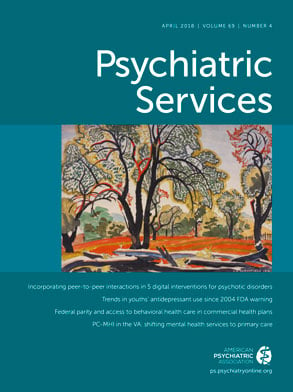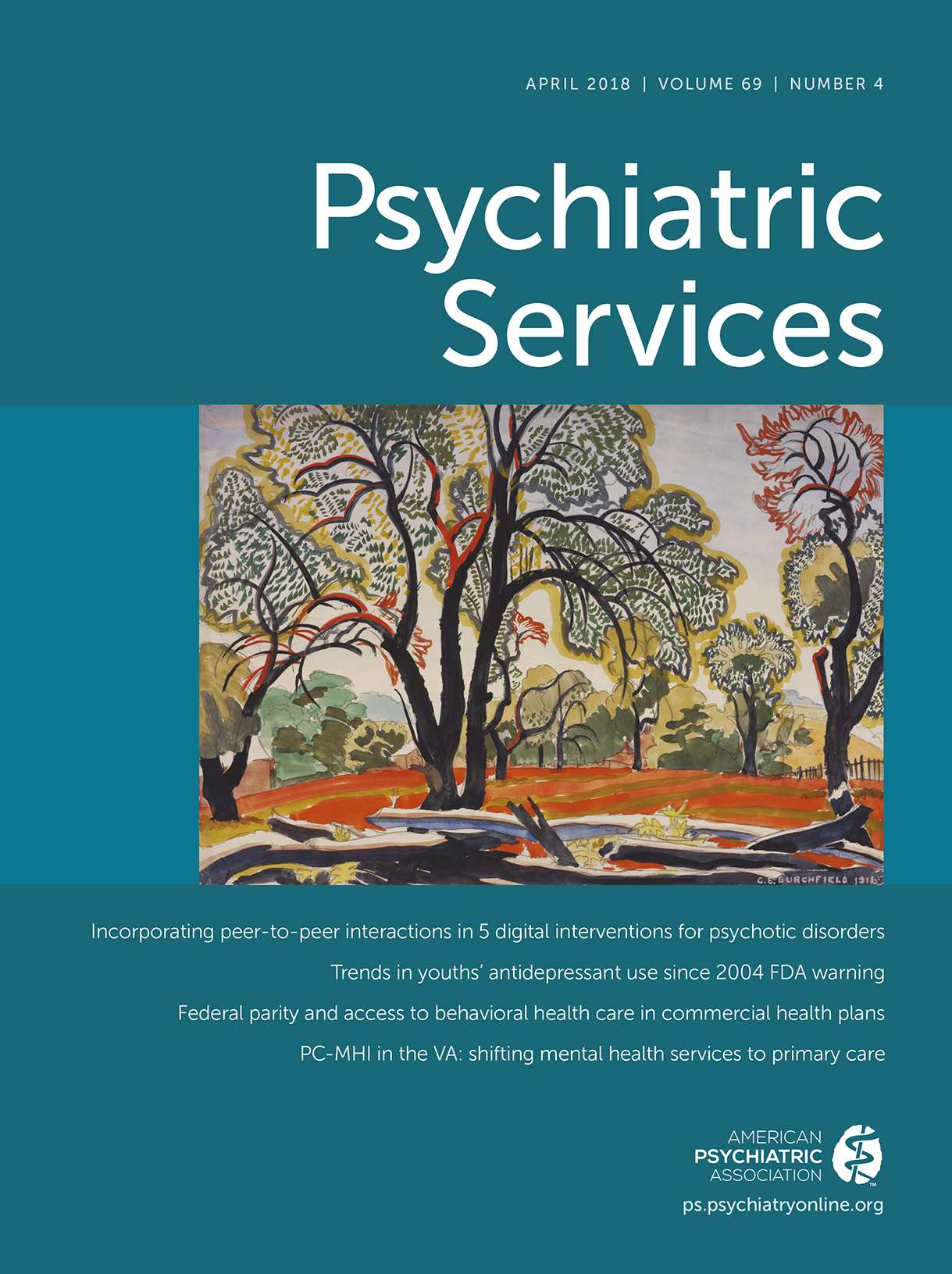Ending AIDS as a Public Health Threat: Treatment-as-Usual Risk Reduction Services for Persons With Mental Illness in Brazil
Abstract
Objective:
Methods:
Results:
Conclusions:
Methods
Results
| Participated in program | |||||||
|---|---|---|---|---|---|---|---|
| Yes (N=58) | No (N=583) | Total (N=641) | |||||
| Characteristic | N | %b | N | %c | N | % | p |
| Age | .101 | ||||||
| <40 | 29 | 11 | 227 | 89 | 256 | 40 | |
| ≥40 | 29 | 7 | 356 | 93 | 385 | 60 | |
| Gender | .924 | ||||||
| Male | 24 | 9 | 245 | 91 | 269 | 42 | |
| Female | 34 | 9 | 338 | 91 | 372 | 58 | |
| Race | .001 | ||||||
| White | 12 | 6d | 198 | 94e | 210 | 33 | |
| Black | 22 | 18e | 103 | 82d | 125 | 19 | |
| Multiracial | 24 | 8 | 282 | 92 | 306 | 48 | |
| Education | .171 | ||||||
| Grade school | 20 | 7 | 255 | 93 | 275 | 43 | |
| High school and beyond | 38 | 10 | 327 | 90 | 365 | 57 | |
| Marital status | .814 | ||||||
| Married or long-term relationship | 28 | 9 | 272 | 91 | 300 | 47 | |
| Not married | 30 | 9 | 311 | 91 | 341 | 53 | |
| Psychiatric diagnosis | .349 | ||||||
| Severe mental illness | 44 | 10 | 408 | 90 | 452 | 71 | |
| Nonsevere mental illness | 14 | 8 | 175 | 92 | 189 | 29 | |
| Unprotected sex in past 3 months | .828 | ||||||
| Yes | 42 | 9 | 436 | 91 | 478 | 75 | |
| No | 13 | 8 | 145 | 92 | 158 | 25 | |
| Decreased number of sexual partners in past 3 months | .579 | ||||||
| Yes | 7 | 11 | 57 | 89 | 64 | 10 | |
| No | 51 | 9 | 526 | 91 | 577 | 90 | |
| Changed sexual behaviors in past 3 months | .287 | ||||||
| Yes | 2 | 18 | 9 | 82 | 11 | 2 | |
| No | 56 | 9 | 574 | 91 | 630 | 98 | |
| Used condoms more frequently in past 3 months | .176 | ||||||
| Yes | 29 | 11 | 238 | 89 | 267 | 42 | |
| No | 29 | 8 | 345 | 92 | 374 | 58 | |
| HIV test in past 3 months | .024 | ||||||
| Yes | 14 | 15e | 77 | 85d | 91 | 14 | |
| No | 44 | 8d | 504 | 92e | 548 | 86 | |
| HIV knowledge score (M±SD)f | 10.6±1.9 | 10.0±2.5 | 10.1±2.4 | .036 | |||
Discussion
Conclusions
Acknowledgments
References
Information & Authors
Information
Published In

Cover: Decorative Landscape, Hot Morning Sunlight, by Charles Burchfield, 1916. Transparent watercolor on white wove paper with color notations in graphite. Edward W. Root bequest, Munson-Williams-Proctor Arts Institute, Utica, NY. Photo credit: Munson-Williams-Proctor Arts Institute/Art Resource, New York City.
History
Keywords
Authors
Funding Information
Metrics & Citations
Metrics
Citations
Export Citations
If you have the appropriate software installed, you can download article citation data to the citation manager of your choice. Simply select your manager software from the list below and click Download.
For more information or tips please see 'Downloading to a citation manager' in the Help menu.
